Mount Everest Express Expedition 2026
EXPEDITION OVERVIEW
Embark on the extraordinary Mount Everest Express Expedition challenge of conquering Everest, achieving this remarkable feat in less than 30 days or less. Our express programs cater specifically to those individuals who harbor the profound desire to ascend Everest but face time constraints that prevent them from committing to the conventional 60-day itinerary.
By opting for a condensed duration on the mountain and at high altitudes, you significantly diminish the potential health risks associated with prolonged exposure. Instances of common ailments, such as colds, viruses (beware the notorious Khumbu cough), and other illnesses, can be mitigated. Moreover, protracted stays at extreme altitudes can negatively impact your overall fitness level. By executing a well-crafted strategic plan that facilitates a swifter ascent, you minimize your vulnerability to the formidable forces of nature at altitudes exceeding 5300 meters.
Embarking on this extraordinary mount everest express expedition requires meticulous preparation and attention to detail. Our team of seasoned professionals will ensure that you receive the guidance, support, and expertise necessary to optimize your chances of success. Together, our group of professionals will craft an accelerated climbing program that balances the imperative of time with the paramount importance of safety and acclimatization.
Dream big, summit Everest, and exceed your own expectations. Let us help you transform your aspirations into reality, embarking on a journey that will leave an indelible mark on your spirit and ignite an unwavering sense of accomplishment.
Pre-requisite requirements (at least several 6000M, 1 X 7000M, 1 X 8000M): Lobuche East & Island Peak, Chulu West, Khumbu 3 Peak expeditions, Mt, Blanc, Baruntse Peak, Himlung Himal, Ama Dablam, Annapurna IV, Manaslu (Similar 4000M – 6000M peaks or higher).
EXPRESS HIGHLIGHTS
- 2:1 Guide/client ratio. IFMGA certified guide with express guiding experiences, at least 3X Everest Summits, high level of support, experience, and guiding knowledge for Everest and Lhotse climb. 1 NMA-certified Sherpa Guide, at least 3X Summits on Everest.
- 10 – 12 weeks of hypoxic training. Hypoxic equipment rentals provided, 12 weeks of training program and consultation by the World’s leading altitude center.
- Unlimited oxygen supply
- 🚁 Shared Ktm – Namche – 6000M BC – Base Camp – Lukla – Kathmandu
- Additional high-altitude Sherpas to assist with Oxygen supply deposit systems
- Small team with a higher degree of Flexibility, independence, and support system
Itinerary
-
Day 1 Arrival in Nepal & Finalise gear check
-
Day 2 Fly to Lukla and to Namche Bazaar 3440M/11286 Ft.
-
Day 3 - 4 Fly to Lobuche East BC 4940M/16,210 ft. Acclimatization peak. Move to high camp and summit and back to BC.
-
Day 5 Trek to EBC
-
Day 6 Meet the rest of the Everest team. The briefing and climbing plans.
-
Day 7 Rest and review climbing skills. (Ladders crossing and fixed line training)
-
Day 8 Camp 2. (Supplemental O2)
-
Day 9 Camp 3 and back to Base camp
-
Day 10 R and R day
-
Day 11 - 22 Summit push plans
-
Day 23 Back to Base Camp
-
Day 24 Fly back to Kathmandu via Helicharter (Shared)
-
Day 25 Departure
-
Day 25 - 30 Contingency days
Include / Exclude
Cost Includes:
-
- 2:1 Guide/client ratio. IFMGA Guide and NMA Certified Guide members
- Unlimited Supplemental Oxygen Cylinders for client use
- 10 to 12 Weeks of hypoxic rentals, personalized training, and acclimatization guidance from instructors. Additoinal Shipping costs apply.
- Shared 🚁 Helicopter Charter From Kathmandu – Lukla – 6000M BC – Everest BC – Lukla – Kathmandu
- $1000 Individual tip pool. (This is not a summit bonus tip) *Tip pool will be fairly distributed among all 7 Summit Expedition staff members. (Guides, porters, drivers, hotel security, and staff). Guest may personally hand in extra tips to our guides and porters)*
- 7 Summit Expedition Branded merchandise (Down Jacket, Cap, Buff)
- Head chef and kitchen helpers (Helpers increase with the number of climbing team members)
- 2 nights before the expedition and 1 day after the expedition. Hotel in Kathmandu. Single room. (Should clients return early from their expedition, clients will be responsible for their extra Kathmandu hotel bookings)
- All trekking and climbing permits (Khumbu Region Permit and TIMS)
- All internal-local transportation to and from the trekking trailhead
- Expedition tents, a single tent in Base Camps and shared in higher camps Brands Salewa, Mountain Hardwear, Samaya equipment, Kailas
- 60 kgs personal weight
- Froze-dried meals during camping days (Chicken, mushroom, vegan options etc)
- Chocolate, energy bars, hydration pills, biscuits, canned foods, nuts
- Burners and expedition equipment
- Walkie-talkie/ Satellite phone
- Breakfast, Lunch, and Dinner on trek and expedition days.
- Lodge accommodation during the trek
- Porters per guest
- The arrival pick up and departure
- Basic First aid kit
- Welcome/Farewell leave Dinner
Cost Excludes:
- Visas and travel insurance
- 2 X Personal guide Summit Bonus tips. $1500 tips IFMGA Guide. $1200 tips 7 summits certified guide
- Entertainment and food (Kathmandu)
- Bottled drinks and beverages
- Evacuation (will be done in your account)
- Tips (Service Charge in Hotel and Restaurants are included)
- Laundry, Phone services, Personal expenditure transactions
- Optional trips
- Tea breaks, chocolates or other snacks, and any meals besides breakfast, lunch, and dinner.
- Delay and cancellation because of natural phenomenon
- International flights to Kathmandu
Price per person
Usefull Information
EXPRESS CLIMBING METHODOLOGY
Harnessing cutting-edge advancements in medical science and pioneering technologies, an increasing number of ambitious souls can now embark on an extraordinary journey to conquer Everest within an expedited timeframe. The results have been unequivocally demonstrated, leading us to firmly believe that the time has come for the inception of the express expedition itinerary. This revolutionary approach shall become the new standard for those bound by time constraints, recognizing that not everyone possesses the luxury of unlimited time, the most invaluable of commodities.
Through the meticulously guided implementation of pre-hypoxic acclimatization and comprehensive training preparation, the once elusive goal of summiting Everest in less than 30 days has been transformed into a tangible reality. Each member of our esteemed team will receive personalized consultations, expert guidance, and specialized training programs from the world’s leading athletic laboratory, located in London. With an unwavering dedication to your success, we proudly present the Everest Express expedition, offering an exclusive opportunity to partake in this extraordinary feat. To facilitate your training, participants will be granted access to cutting-edge altitude training equipment from the UK’s foremost specialists. Detailed instructions for equipment setup, along with personalized online consultations and individually tailored training programs, specifically designed to fast-track your Everest expedition, shall be provided.
For our members based in London membership access to the center can be provided and throughout the United Kingdom, personal access to the center is readily available upon schedule. Alternatively, for our members abroad, gear rentals can be efficiently shipped (shipping costs + customs apply), complemented by scheduled online meetings to ensure seamless communication and support throughout your transformative journey.
PERSONAL CONSULTATION
Participating members will embark on an exceptional journey guided by a personal consultation with a dedicated representative from 7 Summits Expedition, alongside a professional member of our esteemed altitude training center who previously have experience working with express climbing summiteers. Together, we will provide you with invaluable guidance, expertise, and support to ensure your transformational experience reaches its full potential. This personalized consultation will pave the way for a tailored approach that aligns with your unique aspirations and sets the stage for an extraordinary adventure of a lifetime.
PRE-REQUISITE CHECKS AND PREPARATIONS (MUSTS)
In order to ensure the highest level of readiness and safety, acceptance into the program will be granted to participating members following a thorough assessment and consultation process. It is imperative that client members meet our established pre-requisite requirements, and their personal fitness profiles will be meticulously evaluated. These pre-checks, consultations, and preparations form the bedrock of our approach, as they are vital components for successfully undertaking an Everest expedition within a condensed timeframe.
A significant focus will be placed on comprehensive pre-acclimatization and training methodologies. These pivotal elements will empower participants to adapt to the demanding altitude conditions and optimize their physical preparedness. By prioritizing these crucial aspects, we equip our members with the tools and resilience needed to conquer the formidable challenges that lie ahead on their extraordinary Everest journey.
PRE-HYPOXIC ACCLIMATIZATION AND GUIDED TRAINING
Hypoxic chamber acclimatization: Minimum 10 weeks, 12 weeks recommended.
Participating members will engage in a comprehensive hypoxic acclimatization and training regimen lasting for a minimum of 10 weeks (with a recommended duration of 12 weeks) to facilitate adaptation. The specific acclimatization timeline and training objectives will be tailored to each member’s individual profile, and it is essential that these targets are diligently met to ensure the success of the express climb. Optimal results are achieved when participants commit to a longer duration (10-12 weeks) of deliberate hypoxic chamber acclimatization, enhancing their ability to adapt effectively before commencing the renowned Everest base camp journey and embarking on the fast-track ascent to the summit.
STRATEGIC SUPPLEMENTAL OXYGEN
The provision of supplemental oxygen is a pivotal aspect of our express climb approach. Members will benefit from an allocation of additional double to triple the usual amount of supplemental oxygen, with flow rates ranging from 4L to 8L per minute. Our team is committed to utilizing the highest-quality oxygen systems, ensuring optimal performance and reliability throughout the duration of the expedition. From Camp 2 (6400m) onwards, supplemental oxygen will be made available to all members. Your personal oxygen system will allow for a flow rate of up to 8L per minute (Maximum), catering to your specific needs and maximizing your comfort and safety at high altitudes.
The responsibility of carrying and depositing the oxygen supply rests with our experienced Sherpa team. Each member will be accompanied by 1 IFMGA certified guide and 1 Sherpa certified guide, who will assist in shouldering the burden of carrying the personal oxygen systems. An additional member of the Sherpa team will be specifically designated to handle the transportation and depositing of oxygen systems at the higher camps. Through this meticulous arrangement, we ensure that your focus remains firmly on the climb itself, while our dedicated team attends to the logistical aspects, guaranteeing a seamless and supported experience.
EVEREST EXPRESS SCHEDULE
The precise itinerary of the Mount Everest Express expedition is designed to be highly flexible, accommodating individual circumstances. The arrival and departure schedules of our members need to be highly flexible. The climbing schedule and strategy will be shaped by factors such as weather patterns, snow conditions, and the progress of line fixing along the route. It is important to note that the actual itinerary may vary as we consider the schedules of other groups to prevent potential bottlenecks and ensure a smooth and efficient ascent.
Upon reaching base camp, our dedicated team will have already initiated comprehensive preparations, including oxygen deposits, Sherpa support, base camp set-up, route selection, and high camp arrangements. These meticulous preparations lay the foundation for a fast-track, successful ascent to the summit of Mount Everest, allowing members to focus on the journey ahead.
We prioritize flexibility throughout the expedition, allowing for potential extensions if circumstances necessitate and participants desire. We recognize that a systematic approach is crucial for increasing the chances of success on an Everest climb. This entails considering factors such as experience, planning, skill, persistence, and training. A well-crafted strategy, combined with a solid system, serves as the key to a triumphant expedition to the peak of the world’s highest mountain.
During our Everest Expedition, our team of seasoned strategists understands the significance of adopting a holistic perspective on the climbing process. Working closely with you, we will tailor a personalized plan that addresses your specific needs and aspirations. If you possess the requisite experience, determination, and dedication to pursue your dream of ascending Mount Everest, we encourage you to apply and join our exceptional team. Let us assist you in transforming your vision of conquering this iconic peak into an awe-inspiring reality.
EXPRESS EXPEDITION GOALS
At 7 Summits Expedition, our mission extends beyond mere size or glamour. Our unwavering focus and top priorities revolve around three core principles:
- Summit Everest in less than 25-30 days: We are committed to attaining the pinnacle of success in reaching the summit of Everest, prioritizing not only speed but also the highest safety standards. Our dedicated team strives to create a remarkable and memorable climbing experience, fostering an environment of camaraderie, fulfillment, and personal growth.
- In pursuit of these objectives, we consistently assemble and recruit the industry’s finest climbing guide leaders. 1 X IFMGA & 1X NMA Guides are confirmed. These exceptional individuals possess unrivaled expertise, experience, and a profound commitment to safety and client satisfaction. With their guidance and leadership, we ensure that every climber receives unparalleled support, mentorship, and the highest standards of professionalism throughout their Everest journey.
- Embodying Responsible, Ethical, and Sustainable Practices: We take great pride in being a beacon of responsible, ethical, and sustainable expedition operations. With a deep respect for the pristine natural environment of Everest and the communities that surround it, we diligently adhere to practices that minimize our ecological footprint, respect local cultures, and contribute to the preservation of the mountain’s fragile ecosystem.
OUR EVEREST EXPEDITION ROUTE
- The South col route, Nepal. Better infrastructure and rescue availability up to camp 2.
- The South Side is a milder climbing environment vs the drier, dustier, windier North Side
At 7 Summits Expedition Adventure have been at the forefront of providing state-of-the-art communication systems for our expeditions. These systems offer comprehensive weather forecasting, which allows us to plan our ascents around favorable conditions. In addition, our team of meteorologists, based in Europe, Kathmandu, and the base camps, provides an expert interpretation of weather data, including wind speed, precipitation, and temperature, to help inform decision-making.
Unlike larger operation teams, we take a more nimble approach, with small, flexible teams. This allows our climbers greater flexibility in terms of rotation dates and the ability to make swift decisions about summit attempts, minimizing the potential for queues on the mountain. We also have a dedicated base camp and support crew to ensure that our Express clients receive the highest level of care, including a dedicated base camp doctor who is solely focused on the well-being of the team members. Our expedition leader climbs with the team to the summit and back, enabling us to make critical decisions quickly and effectively.
By keeping our team small but highly supported, we are able to provide the best possible strategy, flexibility, and resources to succeed in the dynamic environment of Mount Everest, while never compromising on safety or standards. Please see below for further details on our expedition strategy.
ACCLIMATISATION LOBUCHE EAST 6119M
As an integral part of our meticulously crafted expedition, we have strategically incorporated Mount Lobuche East, a remarkable peak towering at an elevation of 6119 meters, or an alternate 6000M peak with lesser footfall, to enhance our acclimatization process. With an unwavering dedication to our climbers’ well-being, our express team will be transported directly to the base camp, where they will embark on their acclimatization ascent to the 6000M peak the very next day.
Renowned for its popularity and significance in the mountaineering realm, this revered 6000-meter peak in Nepal serves as an ideal setting for our team to hone their skills, adjust to the challenges of high altitude, and forge strong bonds among fellow members. Moreover, the climb will provide our experienced guides with invaluable insights into the individual climbers’ levels of confidence, fitness, and technical prowess.
EVEREST BASE CAMP 5346M
Upon the successful completion of their acclimatization ascent to the esteemed 6000M peak, the members of the Everest Express team will be flown directly to our designated base camp. This iconic location will serve as their home for a period spanning between 2 to 4 weeks. As they settle into base camp, they will have the opportunity to meet and collaborate with the members of the regular Everest expedition team, as well as the entire 7 Summits Expedition team.
During this crucial phase, our express team will receive comprehensive updates and briefings regarding the current mountain conditions and the meticulously devised climbing strategy moving forward. Moreover, their primary focus will be on rest and recovery, capitalizing on the rejuvenating atmosphere at base camp. Additionally, our team will conduct essential light ladder training sessions, ensuring that our members are well-prepared and confident for the upcoming challenges.
If you harbor a desire to share this extraordinary experience with your loved ones, we extend a warm invitation for them to join us on our exclusive Everest Base Camp Special Edition Trek or partake in the exhilarating Lobuche East Peak climb, which caters to climbers ranging from beginners to intermediates. For further details and arrangements, please follow the provided link or reach out to our team directly. We eagerly anticipate the opportunity to share this unforgettable journey with you.
For additional insights on the remarkable Everest Base Camp Special Edition, kindly click here.
TRAINING AT BASE CAMP (LADDERS, FIXED LINES TRAINING) 5486M / 17998FT
Mastering the art of traversing the ladders set across the treacherous Khumbu icefall stands as one of the initial technical hurdles to conquer in our ascent of Mount Everest. Consequently, a substantial portion of our training regimen will be devoted to attaining proficiency in this crucial skill. Our ultimate objective is to recreate the exact conditions encountered in the icefall, thus equipping every climber with the utmost comfort and unwavering confidence when navigating the ladders. Throughout this period, our seasoned guides will provide personalized guidance in real-time, ensuring the unwavering safety and resounding triumph of the entire team.
CAMP 1 (6,065M/19,900FT)
Camp 1 shall be established on a pristine expanse of snow and ice, positioned below the majestic Nuptse. Beyond this juncture, the pathway towards Camp 2 gradually transitions into a more level and navigable terrain. Our express team, driven by their unwavering determination, will forgo resting at Camp 1 and instead embark on an uninterrupted journey towards Camp 2, putting their acclimatization capabilities to the test.
CAMP 2 (6400M/20997FT)
At Camp 2, our esteemed express team will spend a night to delve deeper into the acclimatization process. It is at this juncture that the utilization of supplemental oxygen commences, bolstering their endurance and fortitude.
The ascent from Camp 1 to Camp 2 unfolds along a relatively even path, in stark contrast to other segments of the climb. Enveloped by the awe-inspiring presence of Nuptse, Everest, and Lhotse, this section offers panoramic vistas of these legendary peaks. It marks a thrilling phase of the expedition, where climbers must adeptly maneuver through the intricate web of zig-zagging crevasses, demanding unwavering focus and resolute determination.
CAMP 3 (7200M – 7500M / 23622FT+)
The next phase of our expedition entails spending an additional night at Camp 3, enabling our express team to further acclimatize and adapt to the formidable environment of Mount Everest. Throughout this period, the team will continue utilizing oxygen support.
Situated on a steep section of Lhotse’s face, Camp 3 necessitates a demanding ascent up fixed-line ropes from Camp 2. The camps established at this altitude pose heightened risks, occupying narrow ledges or pockets that can be precarious. To ensure the utmost safety, it is imperative that all climbers diligently secure their safety ropes to the main safety lines, as historical data reveal instances of falls and incidents, particularly during nocturnal hours. Our seasoned guides will remain readily available, offering invaluable assistance and guidance, safeguarding the well-being of the entire team.
BACK TO BASE CAMP AND BE READY FOR SUMMIT BID
After allowing yourself ample time to rest and recover, it is now time to prepare for the exhilarating summit push window. The path ahead will take you through the awe-inspiring Khumbu Ice Fall, leading to the establishment of Camp 1. From there, you will progress to Camp 2, where you will spend a night to replenish your energy. The journey continues as you ascend to Camp 3, where you will rest and acclimatize, followed by a further climb to Camp 4, where another extreme altitude night awaits you.
As you approach the South Col, the gateway to the majestic summit of Everest, remember that you have come this far through your unwavering determination. Summon your inner strength and resilience, for the final leg of the expedition awaits. Standing atop the world’s highest peak will be a testament to your unwavering spirit and indomitable will.
However, along this incredible journey, it is crucial to remain mindful of the potential challenges that may arise. Maintain a vigilant attitude, always aware of the risks, and make informed decisions that prioritize your safety and well-being. While pushing your limits and conquering Everest, remember to savor every moment, cherishing this extraordinary achievement that will forever be etched in the annals of your life’s greatest accomplishments.
So, rest, recover, and prepare yourself for the extraordinary. With a mindset of resilience and an unwavering determination, set forth on this remarkable adventure that awaits you. Embrace the challenges, seize the opportunities, and revel in the fulfillment of your dreams as you embark on this extraordinary journey to the pinnacle of Mount Everest.
SOUTH COL (CAMP 4) (7906M / 25938FT)
Camp 4, also known as the South Col, is the final camp before the summit. It sits at an elevation of 7906 meters, just 100 meters below the Death Zone, where the air is very thin and oxygen bottles are required within the tents. The climb from the South Col to the summit is approximately 1.7 to 1.9 miles and typically takes 6 to 9 hours or more. The summit bid will begin just before midnight, with a steep ascent up the south side of Mount Everest. Upon reaching the Balcony at 27,500 feet, climbers will turn westward up the ridge to the South Summit, traverse the Hillary Step, and follow the Summit Ridge to the summit. This is the most challenging and rewarding part of the expedition, and we will be there every step of the way to support and guide you.
SUMMIT OF EVEREST (8848.86M / 29031.69 FT)
Our ultimate objective is to conquer the summit of Mount Everest during the early hours of our ascent. This final leg of the journey will be demanding and will require a tremendous push of physical and mental strength. Starting from the South Col, we will commence our climb by tackling a steep incline with an angle of 30 to 40 degrees, leading us to the Balcony on the south side of the mountain. Here, we will rely on fixed-line ropes to ascend the southeast ridge, making our way towards the South Summit. At this juncture, we will pause to rest and replace our oxygen cylinders, reenergizing ourselves for the arduous climb ahead.
Continuing our ascent, we will encounter the challenging cornice traverse before reaching the renowned Hillary Step. Overcoming this prominent feature, we will finally set foot upon the summit, an awe-inspiring pinnacle often referred to as the “roof of the world.” The ascent of the Hillary Step typically requires around 30 minutes for most climbers, marking the proximity of our ultimate goal.
Upon reaching the summit, we will take a well-deserved moment to celebrate, capturing cherished memories through photographs and fully immersing ourselves in the extraordinary experience. However, it is essential to recognize that reaching the summit is merely the midpoint of our journey, as the descent poses its own set of perils. With utmost caution, we will retrace our steps along the same route, meticulously making our way back to Camp 4. Our aim will be to spend the night at Camp 2, as it provides a suitable resting point. The entire summit push is estimated to take approximately 10 to 16 hours, varying depending on each climber’s individual pace.
Throughout this challenging endeavor, it is crucial to adhere to safety protocols, exercise sound judgment, and maintain physical and mental resilience. The teamwork, perseverance, and unwavering determination that have brought us this far will continue to guide us as we descend from the summit. The path back to base camp requires equal attention and care, as we navigate the treacherous terrain with caution and vigilance.
Together, we shall overcome the formidable obstacles that lie ahead and triumphantly return to base camp, enriched by the accomplishment of standing atop the world’s highest peak. This monumental journey will test our limits, instill in us invaluable lessons, and forge lifelong memories. Let us approach the challenge with unwavering resolve, recognizing that true success is not only in reaching the summit but also in returning safely to the embrace of base camp.
Equipment List
Clothing
Base Layers:
– Moisture-wicking thermal tops and bottoms
Insulation Layers:
– Fleece or down jackets and pants
Outer Layers:
– Waterproof and windproof shell jacket and pants (Gore-Tex or similar)
Down Suit:
– Full-body high-altitude down suit
Headgear:
– Warm hat or beanie
– Balaclava or buff
– Sun hat or cap
Handwear:
– Lightweight gloves for lower altitudes
– Insulated gloves or mittens for higher altitudes
– Over mitts
Footwear
Mountaineering Boots:
– High-altitude double or triple boots (e.g., La Sportiva Olympus Mons, Scarpa Phantom 8000)
Trekking Shoes:
– Lightweight trekking boots or shoes for lower altitudes
Gaiters:
– High-altitude gaiters to keep snow out
Socks:
– Moisture-wicking liner socks
– Heavyweight insulated socks
– Spare socks
Climbing Gear
Ice Axe:
– Lightweight ice axe for climbing
Crampons:
– High-quality crampons compatible with your boots
Climbing Harness:
– Lightweight mountaineering harness
Carabiners:
– Locking and non-locking carabiners
Ascenders:
– Mechanical ascender for fixed ropes
Belay/Rappel Device:
– ATC or similar belay device
Ropes:
– Personal prusik loops or short lengths of cord
Helmet:
– Climbing helmet
Camping Equipment
Tent:
– High-altitude expedition tent
Sleeping Bag:
– Down sleeping bag rated to at least -40°C (-40°F)
Sleeping Pad:
– Insulated inflatable or foam sleeping pad
Cooking Equipment:
– Stove and fuel (provided by the expedition team)
– Lightweight pot and utensils
Personal Gear
Backpack:
– Large backpack (60-80 liters) for carrying gear
– Small daypack (20-30 liters) for acclimatization hikes
Hydration:
– Water bottles (insulated for higher altitudes)
– Hydration system (optional)
Navigation:
– Map, compass, or GPS device
Headlamp:
– Headlamp with extra batteries
Sunglasses:
– High UV protection glacier glasses
Goggles:
– Ski goggles for protection in high winds
Sunscreen:
– High SPF sunscreen and lip balm
Miscellaneous
First Aid Kit:
– Personal first aid kit with altitude medications
Personal Hygiene:
– Toiletries (toothbrush, toothpaste, wet wipes)
– Hand sanitizer
Communication:
– Satellite phone or radio (often provided by the expedition)
Camera:
– Lightweight camera or smartphone for photos
Optional Items
Supplemental Oxygen:
– Oxygen bottles and mask/regulator set (typically provided by the expedition)
Books/Journal:
– Reading material or a journal for downtime
Snacks:
– Personal energy bars or snacks
This list covers the essential gear needed for the Mount Everest Express Expedition, ensuring climbers are well-prepared for the challenges of high-altitude climbing. Always consult with your expedition operator for any specific gear recommendations or requirements.
-
 Best Seasons April to May
Best Seasons April to May -
 Group Size 2 To 10
Group Size 2 To 10 -
 Duration 29 DAYS BOOKING OPEN FOR 2026
Duration 29 DAYS BOOKING OPEN FOR 2026 -
 Maximum Altitude 8848.86M
Maximum Altitude 8848.86M -
 Trek Difficulty Technical and Challenging
Trek Difficulty Technical and Challenging

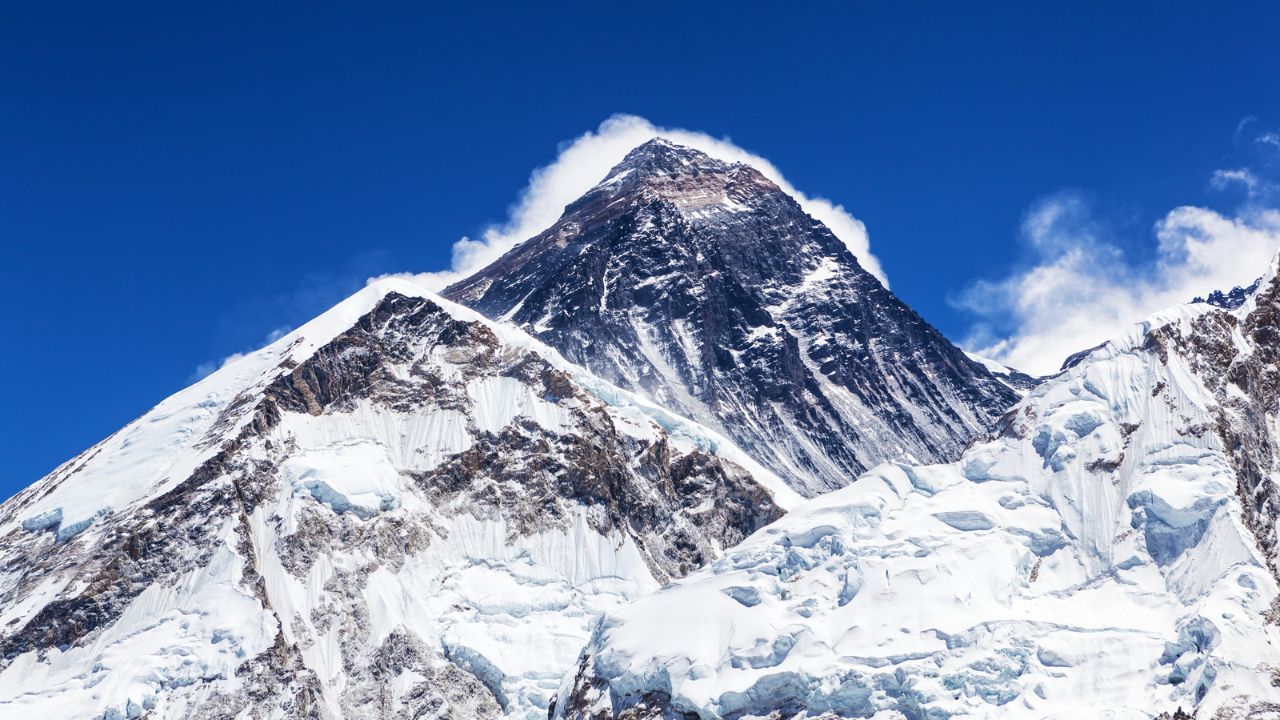


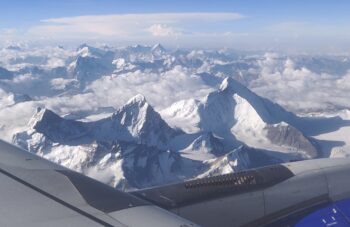
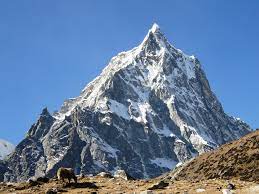
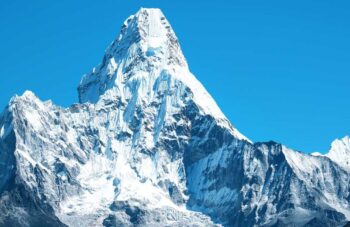
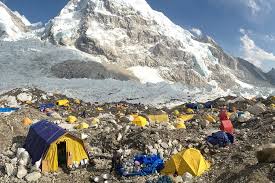
Leave a Reply